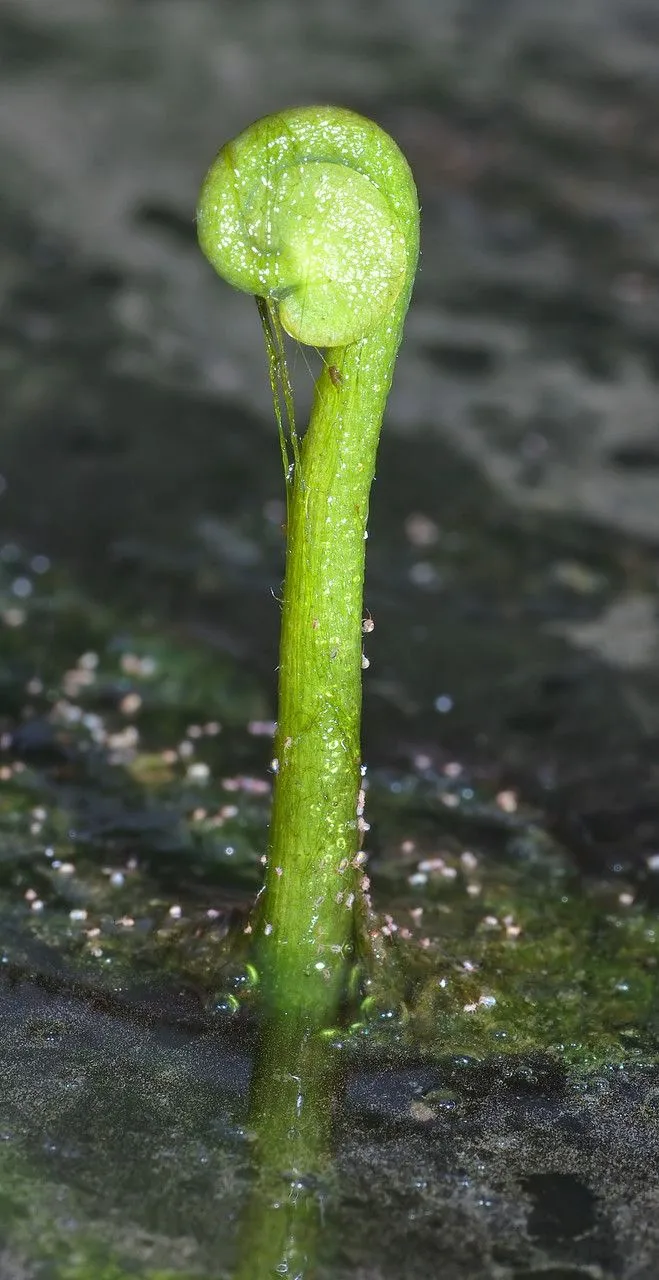
Author: Thunb.
Bibliography: Hydrocotyle: 5 (1798)
Year: 1798
Status: accepted
Rank: species
Genus: Hydrocotyle
Vegetable: False
Observations: New World, Somalia to S. Africa, Madagascar, Caucasus to N. Iran
The Whorled Marsh Pennywort, scientifically named Hydrocotyle verticillata, is a fascinating aquatic perennial plant recognized for its distinctive growth pattern and ecological versatility. First described in the literature in 1798 by Thunberg, this species belongs to the Araliaceae family, exhibiting intriguing morphological features that contribute to its widespread distribution.
Native to the New World, the Whorled Marsh Pennywort has a remarkable adaptability that allows it to thrive in a variety of environments, extending from the diverse regions of Somalia and South Africa to Madagascar, and spanning across the Caucasus to Northern Iran. This extensive range highlights its ability to establish itself in both tropical and temperate climates, showcasing its ecological resilience.
Characterized by its whorled arrangement of leaves, Hydrocotyle verticillata displays small, rounded foliage which often forms a distinctive rosette pattern. This unique growth habit not only aids in its identification but also enhances its ability to spread efficiently across marshy and wetland habitats. As an aquatic plant, it is frequently found in shallow waters or moist soils, where it plays a vital role in maintaining the ecological balance by providing habitat and food for various aquatic organisms.
In addition to its ecological importance, the Whorled Marsh Pennywort is also valued in ornamental gardening and aquascaping due to its attractive appearance and utility in water gardens. Its low-maintenance nature and rapid growth make it a popular choice for enhancing the aesthetic appeal of ponds and wetland-themed landscapes.
Overall, Hydrocotyle verticillata serves as a compelling example of botanical adaptability and ecological significance, representing a species that not only contributes to biodiversity but also provides practical benefits for environmental and decorative applications.
Eng: whorled marshpennywort, whorled marsh pennywort, whorled water pennywort
En: Whorled marsh pennywort, Whorled marshpennywort, Whorled water pennywort, Whorled Marsh-pennywort, Whorled pennyroyal
Taken Feb 20, 2022 by Alvarado Gloria (cc-by-sa)
Taken Jan 14, 2022 by Jacob Nulik (cc-by-sa)
Taken Nov 12, 2022 by Blue Bottle (cc-by-sa)
Taken Nov 12, 2022 by Blue Bottle (cc-by-sa)
Taken Sep 26, 2021 by tdtexas49 (cc-by-sa)
Taken Feb 26, 2020 by Marcel B. (cc-by-sa)
Taken Oct 25, 2019 by Dr Ashwathanarayana Rao (cc-by-sa)
Taken Jan 1, 1900 by EOL − Niehaus, T.F. (cc-by-nc-sa)
Taken Jan 1, 1900 by EOL − Niehaus, T.F. (cc-by-nc-sa)
Taken Dec 21, 2019 by Garcia Marina (cc-by-sa)
Taken Jan 1, 1900 by EOL − Kenpei (cc-by-sa)
Taken Mar 29, 2021 by Sébastien TRASBOT (cc-by-sa)
Taken Dec 13, 2014 by EOL − Sam Kieschnick (cc-by-nc)
Taken Jan 1, 1900 by EOL − Kenpei (cc-by-sa)
Taken Jan 1, 1900 by EOL − Encyclopedia of Life (cc-by-sa)
Taken May 7, 2022 by pedrogc — (cc-by-sa)
Taken Jan 1, 1900 by EOL − Forest & Kim Starr (cc-by)
Taken Dec 3, 2021 by Paridhi Shah (cc-by-sa)
Taken Nov 10, 2022 by TIARA ISYARA – (cc-by-sa)
© copyright of the Board of Trustees of the Royal Botanic Gardens, Kew.
© copyright of the Board of Trustees of the Royal Botanic Gardens, Kew.
© copyright of the Board of Trustees of the Royal Botanic Gardens, Kew.
Growth habit>: Forb/herb
Family: Myrtaceae Author: (F.Muell.) K.D.Hill & L.A.S.Johnson Bibliography: Telopea 6: 402 (1995) Year: 1995 Status:…
Family: Rubiaceae Author: Pierre ex A.Froehner Bibliography: Notizbl. Bot. Gart. Berlin-Dahlem 1: 237 (1897) Year:…
Family: Sapindaceae Author: Koidz. Bibliography: J. Coll. Sci. Imp. Univ. Tokyo 32(1): 38 (1911) Year:…
Family: Asteraceae Author: A.Gray Bibliography: Pacif. Railr. Rep.: 107 (1857) Year: 1857 Status: accepted Rank:…
Family: Fabaceae Author: Medik. Bibliography: Vorles. Churpfälz. Phys.-Ökon. Ges. 2: 398 (1787) Year: 1787 Status:…
Family: Aspleniaceae Author: (Cav.) Alston Bibliography: Bull. Misc. Inform. Kew 1932: 309 (1932) Year: 1932…